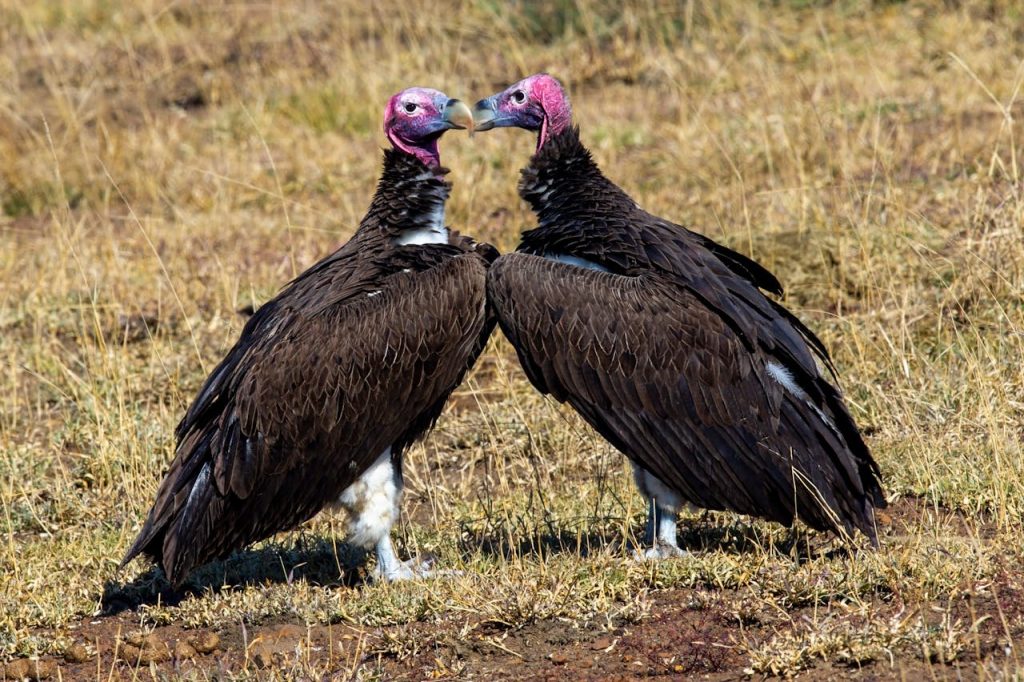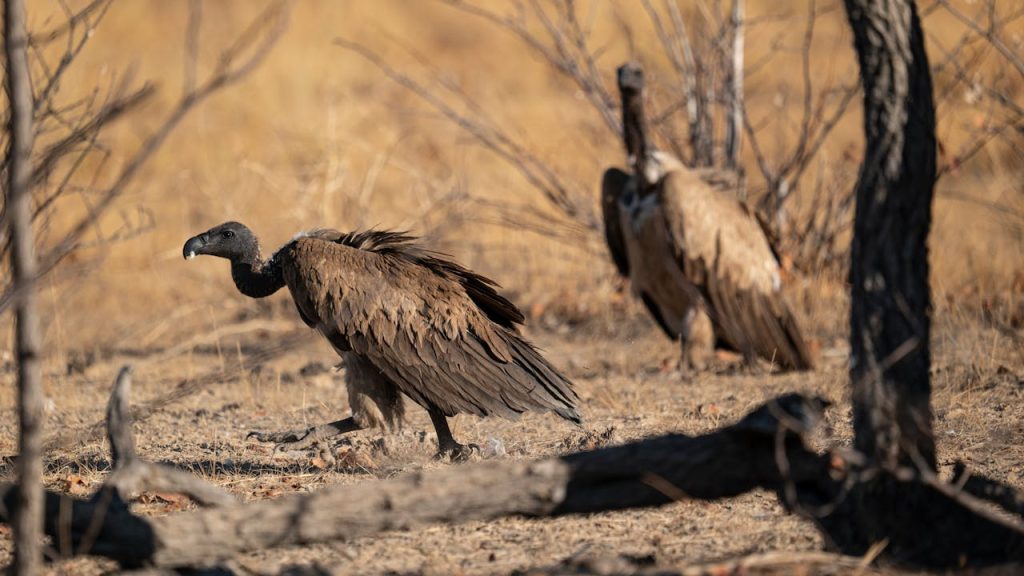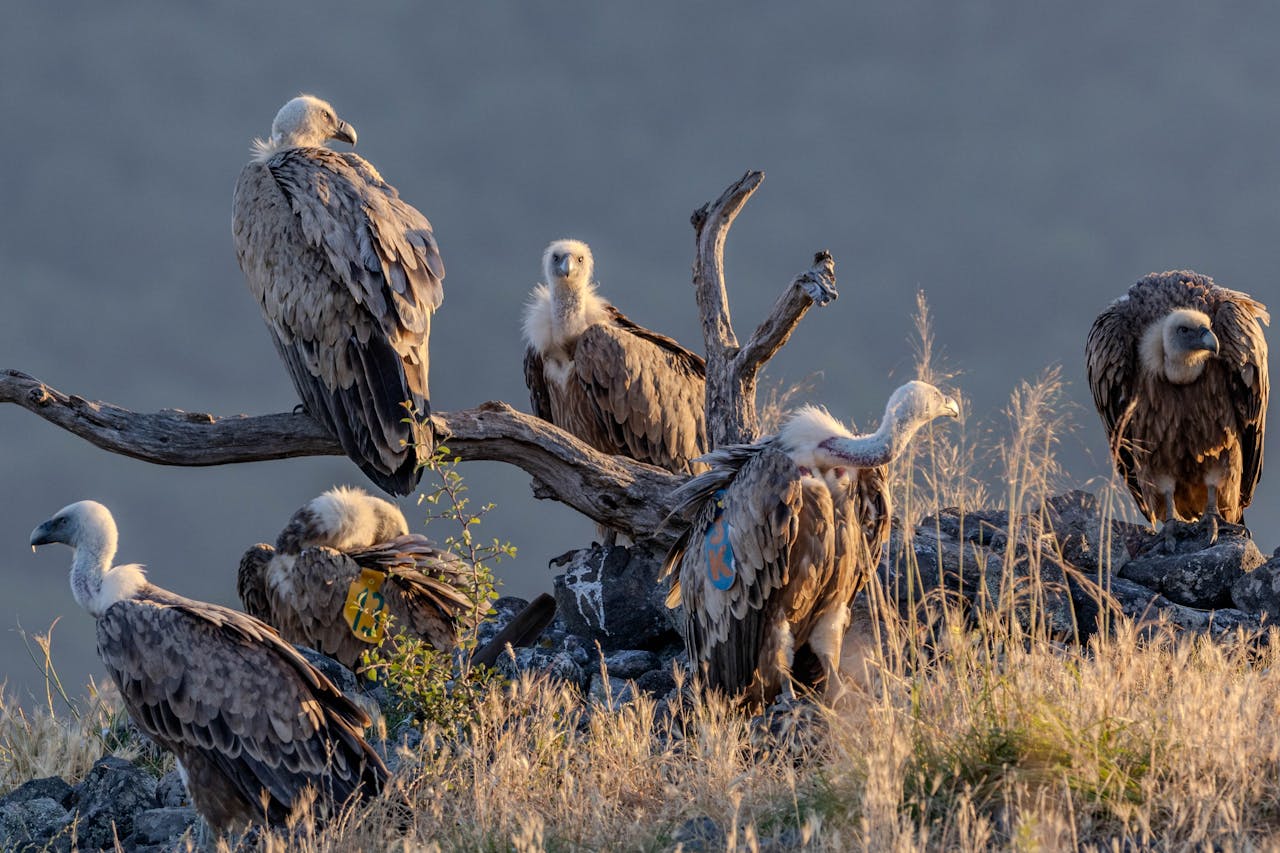Vultures are an essential part of Texas’ diverse ecosystem, playing a crucial role in maintaining balance by cleaning up carrion and preventing the spread of disease.
Often misunderstood due to their scavenging nature, vultures are actually fascinating birds with unique adaptations and behaviours. In Texas, you can find several types of vultures soaring through the skies, each with its distinct traits and characteristics.
In this blog post, we’ll explore the types of vultures commonly seen in Texas and learn what makes each species unique.
1. Turkey Vulture (Cathartes aura)
The Turkey Vulture is the most widespread vulture species in North America and is commonly seen throughout Texas. Known for their distinctive red heads and broad wings, these vultures are often spotted gliding effortlessly in circular patterns high in the sky.
Characteristics:
- Appearance: Adult Turkey Vultures have dark brown or black feathers and bright red, featherless heads. Juveniles have darker, greyish heads until they mature.
- Wing Span: Their wings can stretch up to 6 feet, allowing them to soar gracefully using thermal currents with minimal wing flapping.
- Feeding Habits: Turkey Vultures have a highly developed sense of smell, enabling them to detect carrion from great distances. They feed primarily on animal carcasses and play a vital role in the ecosystem by preventing the spread of disease.
Where to Spot Them:
Turkey Vultures are commonly seen across the entire state of Texas. Look for them flying low over open areas, fields, and highways, where they search for food. They are especially active in rural areas but can also be found in suburban and urban settings.

2. Black Vulture (Coragyps atratus)
Another prominent species in Texas is the Black Vulture. While they share some similarities with Turkey Vultures, Black Vultures have distinct characteristics that set them apart.
Characteristics:
- Appearance: Black Vultures are smaller than Turkey Vultures, with entirely black feathers and greyish-black, featherless heads. Their legs and feet are also paler in color.
- Wing Span: Their wingspan is slightly shorter, reaching up to 5 feet. Black Vultures are easily identifiable by the white patches on the tips of their wings when in flight.
- Feeding Habits: Unlike Turkey Vultures, Black Vultures rely more on their eyesight than their sense of smell to find food. They often follow Turkey Vultures to locate carrion and are known to be more aggressive feeders.
Where to Spot Them:
Black Vultures are most commonly found in the eastern and southern regions of Texas. They tend to roost in large groups in trees and are often seen perched on utility poles or circling above open fields and woodlands.
3. Lesser-Known Visitors: The Occasional California Condor
Although not a native or common resident in Texas, the California Condor (Gymnogyps californianus) deserves a mention due to its historical range and occasional sightings.
Historically found in parts of the southwestern United States, including West Texas, these massive birds were nearly extinct in the 1980s. Conservation efforts have slowly increased their population, and while not typically spotted in Texas today, isolated sightings do happen.
Characteristics:
- Appearance: California Condors are the largest flying birds in North America, with a wingspan of up to 9.5 feet. They have black plumage with white patches under their wings and a striking bald, orange-pink head.
- Feeding Habits: Like other vultures, California Condors feed exclusively on carrion. Their large size allows them to dominate feeding sites and consume larger carcasses.
Where to Spot Them:
While California Condors are not currently residents of Texas, conservation efforts in nearby states, such as Arizona, may lead to occasional appearances. Bird enthusiasts in West Texas may have a slim chance of spotting a wayward condor.

How to Identify Vultures in Texas
Identifying vultures in Texas is relatively straightforward, thanks to their distinct flight patterns, appearances, and behaviors. Here are some key tips for distinguishing them:
- Flight Patterns: Turkey Vultures have a distinctive tilting or rocking flight, often holding their wings in a shallow “V” shape. In contrast, Black Vultures tend to flap more frequently and have flatter wings.
- Coloration and Size: Turkey Vultures have red heads and larger wingspans, while Black Vultures have darker heads and smaller wingspans with noticeable white wingtips.
- Roosting Habits: Both species often roost in groups, but Black Vultures are more likely to perch together in large numbers on trees or man-made structures.
The Role of Vultures in Texas’ Ecosystem
Vultures are nature’s cleanup crew, helping to dispose of animal carcasses and reducing the spread of diseases like anthrax, botulism, and rabies. Their strong stomach acids allow them to safely consume decaying meat, breaking down harmful bacteria and toxins that would be dangerous to other animals. Without vultures, Texas’ ecosystem would be at risk of increased disease and a buildup of carcasses.
Conserving Vultures in Texas
Vultures face threats such as habitat loss, poisoning, and collisions with vehicles. Conservation efforts are essential to protect these vital birds and maintain the balance of Texas’ ecosystems. Simple steps like limiting the use of harmful pesticides, safely disposing of dead animals, and supporting wildlife conservation organizations can make a significant difference.
Conclusion: Appreciating Texas’ Vultures
The next time you see a vulture soaring overhead or perched on a fence post, take a moment to appreciate their role in the environment. These remarkable birds are often misunderstood but are crucial to maintaining the health of our ecosystems. Texas is home to both Turkey Vultures and Black Vultures, each with unique characteristics and behaviors that make them fascinating to observe.
If you’re a birdwatcher or nature enthusiast, learning to identify and appreciate these scavengers can provide a deeper understanding of Texas’ diverse wildlife. So, grab your binoculars and head out to explore the skies—you never know what majestic vulture you might encounter.
